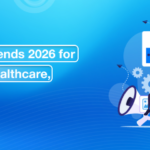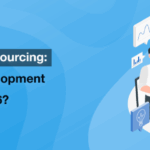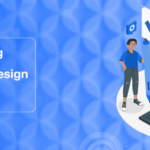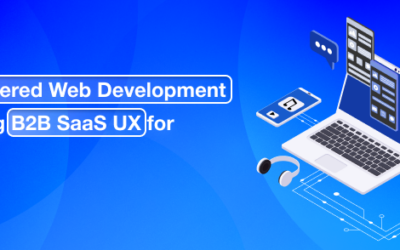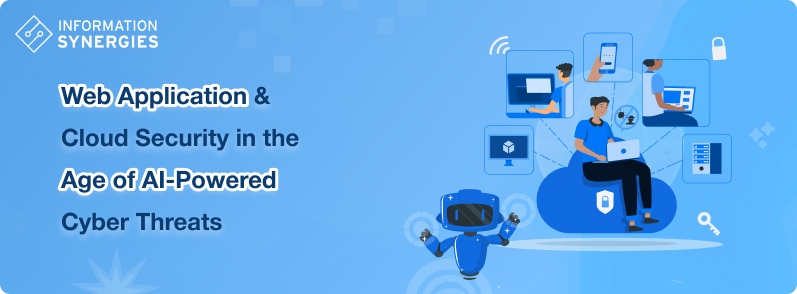
With the rise of the digital economy, cloud adoption moved from a choice to a default. All sizes of businesses are adopting cloud-first strategies to facilitate scalability, cost-effectiveness, and global accessibility. But with businesses moving central functions—from customer platforms to internal collaborative tools, cybersecurity has dramatically shifted.
Cloud-first innovation opens up possibilities, but it also reveals new risks. Old perimeter-based defenses can’t keep up with distributed, API-centric, and AI-based systems today. The consequence? Companies have to reimagine cybersecurity from scratch, erecting defenses as nimble and elastic as the cloud itself.
At Information Synergies, LLC, we see that cybersecurity is no longer merely a matter of protecting networks; it’s a matter of infusing trust into every aspect of your online presence. From Web Application Development to Custom AI-Focused Web Design to enterprise cloud environments, strong defenses now shape long-term success.
Shared Responsibility & Cloud Security Basics
The shared responsibility model is the first rule of cloud security.
- Cloud Providers (AWS, Azure, Google Cloud) provide physical infrastructure, servers, and core networking security.
- Applications, workloads, and data are secured by organizations.
Some of the most important foundational practices are:
- Identity & Access Management (IAM): Tight access controls, multi-factor authentication, and role-based permissions.
- Data Protection: Encrypting sensitive data in transit and at rest.
- Network Segmentation: Limiting exposure of critical resources to minimize attack surfaces.
By synchronizing architecture with Cloud Solution Security and Compliance, organizations not only harden their defenses but also comply with regulatory frameworks like HIPAA, PCI-DSS, and GDPR.
Significant Risks in Cloud-First Environments
Cloud infrastructure provides speed, but speed often leaves holes that attackers leverage. A few typical threats are:
- Misconfigurations – Storage buckets that haven’t been properly secured or default settings left open.
- API Vulnerabilities – Poor authentication or insecure endpoints in applications.
- Application Attacks – Hazards such as SQL injection, XSS, or CSRF attack poorly written apps.
- Shadow IT – Users installing unauthorized cloud tools without security management.
- Container & Kubernetes Risks – Misconfigured clusters enabling lateral movement.
Each of these threats highlights the need for proactive monitoring and Digital Solutions for Cybersecurity designed specifically for dynamic, cloud-native environments.
Modern Paradigms Shaping Cybersecurity
Classic firewalls and anti-virus are no longer able to keep up. The defenses of today need to be as sophisticated as the attackers:
- Zero Trust Security: Never trust by default; authenticate every access request.
- Identity-First Security: Identities, not networks, form the new perimeter.
- Infrastructure as Code (IaC): Securing infrastructure provisioning automation.
- Policy as Code: Enforcing compliance programmatically at deployment.
These paradigms make security not bolted on later—it’s integrated into Web Application Development and operationalized throughout the entire lifecycle.
Tools, Automation & Continuous Protection
Current security demands continuous protection, real-time visibility, and automation in order to reduce human errors. Some of the key tools are:
- CSPM (Cloud Security Posture Management): Performs misconfigurations and compliance risk scans.
- CNAPP (Cloud-Native Application Protection Platform): Secures workloads across VMs, containers, and serverless.
- SIEM/XDR Platforms: Centralized threat detection and real-time log analysis.
- SOAR Automation: Automated remediation for frequent security incidents.
- AI/ML Security Tools: Predictive defense tools incorporated within Custom AI-centric web design and application environments.
These platforms make static defenses adaptive, Cloud Solution Security and Compliance frameworks.
Security Meets Design & User Trust
Cybersecurity isn’t a backend problem—it directly influences user experience and brand trust.
- Secure Defaults in UX: Provide permissions and privacy options clearly to users.
- Custom AI-Focused Web Design: Leverage AI to eliminate anomalies and automate secure interactions.
- Trust Signals in Interfaces: SSL certificates, compliance badges, and data usage transparency build customer trust.
By linking Digital Solutions for Cybersecurity with design, companies provide usability as well as resilience.
Security in the Development Lifecycle
Incorporating security across the software lifecycle is crucial:
Development:
- Secure coding standards
- Code reviews with static and dynamic testing
- Secure API design practices
Deployment:
- Secure communication via SSL/TLS
- Web Application Firewalls (WAFs)
- Role-based access and monitoring
Maintenance:
- Regular patching and dependency updates
- Continuous vulnerability scanning
- Incident response planning
This “shift-left” methodology, DevSecOps, weaves security into pipelines rather than an afterthought.
Compliance & Industry Regulations
Compliance isn’t optional for most industries; it’s about survival.
- Healthcare (HIPAA): Strong controls on PHI access and encryption.
- E-commerce (PCI-DSS): Secure payment processing and storage.
- Global Operations (GDPR/CCPA): User consent, data portability, and privacy controls.
Successful compliance strategies incorporate auditing, monitoring, and documentation in Cloud Solution Security and Compliance models.
Culture & Organizational Alignment
Technology by itself cannot secure a company—people and culture are just as important.
- Employee Training: Minimizing phishing and social engineering threats.
- Cross-Functional Collaboration: Aligning dev, ops, and security teams.
- Leadership Buy-In: Prioritizing cybersecurity at the organizational level.
At Information Synergies, LLC, we assist organizations in bridging technology and culture so that security practices transcend tools into day-to-day processes.
Challenges & Trade-Offs
There are trade-offs in every security strategy, and acknowledging them keeps organizations in equilibrium:
- Speed vs. Security: Hurried rollouts tend to ignore vulnerabilities.
- Budget Constraints: Duplicate tools and dormant platforms squander resources.
- Alert Fatigue: Too many false positives diminish response effectiveness.
Practical, staged approaches enable companies to deploy Digital Solutions for Cybersecurity without halting innovation.
Looking Ahead: The Future of Cybersecurity
The future will require yet more robust defenses:
- Confidential Computing: Safeguarding data as it is being processed.
- Quantum-Safe Encryption: Preparing for the breakthroughs in quantum computing.
- AI-Driven Defense: Machine learning for predictive, adaptive protection.
- Edge & IoT Security: Securing workloads at the edge of the network.
Businesses that adopt these innovations while investing in Cloud Solution Security and Compliance will stand to succeed.
Why Partner with Information Synergies, LLC
With capabilities cutting across Web Application Development, strategy, design, and compliance, Information Synergies, LLC provides end-to-end cybersecurity solutions. Our offerings are:
- Safe application architecture and WAF deployment
- SSL/TLS certificate management and intrusion detection
- Security audits, compliance scans, and continuous monitoring
- Security integration with design for AI platforms
Our mission is straightforward: enable businesses to innovate without losing trust.
Conclusion & Key Takeaways
The new era of cybersecurity requires:
- Transition to proactive, dynamic defenses through automation and AI.
- Merging security with development and design to deliver seamless, secure experiences.
- Investment in compliance and culture to comply with regulations and maintain long-term resilience.
Cloud-first companies cannot afford to make security optional; it’s the key to digital success.
Contact for Consultation
Ready to strengthen your cloud-first security strategy? Contact Information Synergies, LLC today to schedule a personalized consultation. We’ll evaluate your environment and create a roadmap combining Web Application Development, Custom AI-Focused Web Design, and Digital Solutions for Cybersecurity to meet your goals.
